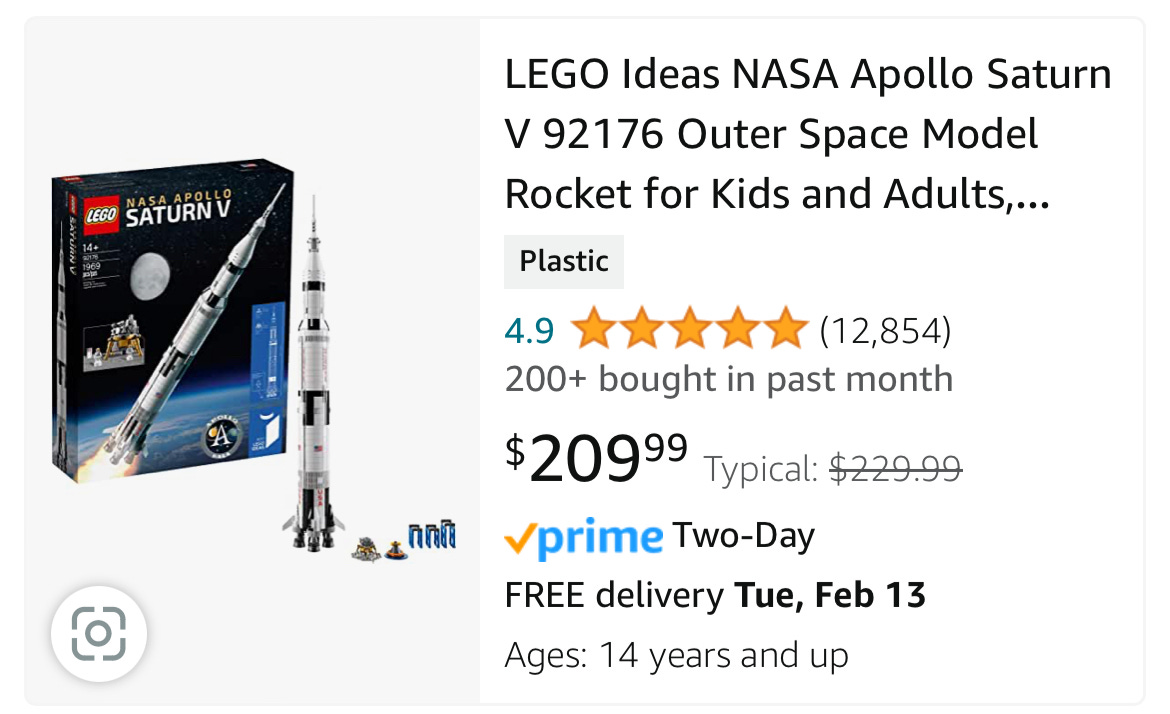TIE #048: The Importance of Liquidity When Investing in LEGO (must read)
Everyone overlooks it, but it's one of the most important characteristics.
The post is brought to you by me.
If you’re going to invest in LEGO, you need to keep track of your investments.
Look no further than my LEGO Investing Portfolio Tracker.
This is a spreadsheet created by Anthony (a newsletter subscriber & mongo927 on Discord) that helps you become a more organized and responsible investor.
It automatically calculates everything you need to know about how well your investments are performing.
For a small one-time fee, you get lifetime access to all future updates so you can stay organized and confident about your investments.
I’m not the only person who talks about LEGO investing on the internet.
There are a myriad of content creators that do their best to highlight which LEGO sets they think will perform best every year.
Some are better than others, most don’t use a system, they all seem to just go with their gut, but they all seem to do okay.
However, there is one thing none of them talk about:
Liquidity
Put another way:
None of them seem to consider how often a LEGO set sells in relation to it’s peers before recommending it or investing in it
There are only two explanations for this:
They are investing with a very low amount of capital
They don’t understand basic investing fundamentals
I have seen numerous creators recommend sets that had I bought over 100 of them, it would have taken me over a year to sell them all.
If you’re buying just a few sets each there this isn’t an issue but buy more than that and you’ll be frustrated as you try to cash in on your patience.
To make real money in this game, the LEGO sets you invest in must sell quickly and easily.
They must be in-demand in retirement to ensure you unload them all at a profitable price.
This is why my set picking system specifically analyzes the demand of a set.
Not just the demand, but the price adjusted demand.
The best way to gauge this is via Amazon sales rank data plotted over time so you can gain an understanding of just how well a set is doing.
(Price adjustment and sales rank data are both discussed heavily in my LEGO Investing Mastery guide)
While we cannot know the demand of a set post-retirement, the next best thing is the demand of the set pre-retirement.
But like I just said, the price adjusted demand.
Let me give you a comparison featuring two sets that retired in 2022:
The NINJAGO set above had an MSRP of $40 and is now selling for $75. Not a terrible return right?
Well, based on it’s average sales rank on Amazon, less than 1 of these sell every day.
If 10 investors had a bunch of stock, think about how long it would take for all of those to sell…
Investing in a set like this can be prevented by analyzing demand prior to investing.
On the other hand, take a look at this set:
With an MSRP of $120, it has experienced a similar amount of price appreciation.
The difference between the two?
The NASA set was purchased 200 - 300 times last month despite being much more expensive.
It’s liquidity is 200-300x as high as the NINJAGO set shown above.
That allows for plenty of easy profit taking.
How could we have known this prior to retirement?
By analyzing demand and thus knowing liquidity would likely be high post-retirement.
That’s all for today’s lesson.
If you have a question, leave it below.
P.S. Turns out there are a few LEGO groups out there that love to talk negatively about my content here (I was sent multiple screenshots)
My only response is this:
There is a reason I share my portfolio + hit list publicly and there is a reason no one else is willing to do that.
No one.
Food for thought.
When you are ready, there is one way I can help you:
Join 600+ people in becoming a paid subscriber to this newsletter
In doing so, you get access to:
My private mentorship group on Discord (this used to be $329)
Buy/Sell alerts for LEGO (these will make you money)
Buy/Sell alerts for Pokemon card investments (these will make you money)
These resources will show you how make your first $1,000 on the internet using the same methods I used to escape the rat race.
Get access to it for free by becoming a paid newsletter subscriber:
This post is not financial or investment advice.
I am simply informing you of what I have done with my own capital.
What you choose to do with your capital is at your own discretion.
While I will always vouch for the content I publish and the ideas I teach, there are limits to what I’m legally allowed to encourage without putting myself in harms way.






I can’t imagine others talking negatively about what you do! I greatly appreciate all that you have put out there for people to become successful with. Super excited to start selling this Christmas and see where lego investing takes me!
So If a Lego set is current and selling 100+ per month, I should analyze data over time to have an informed idea of how well it will do in retirement? Or chances are that it will be selling less once it is retired, since it is selling 100+ now when it is current?